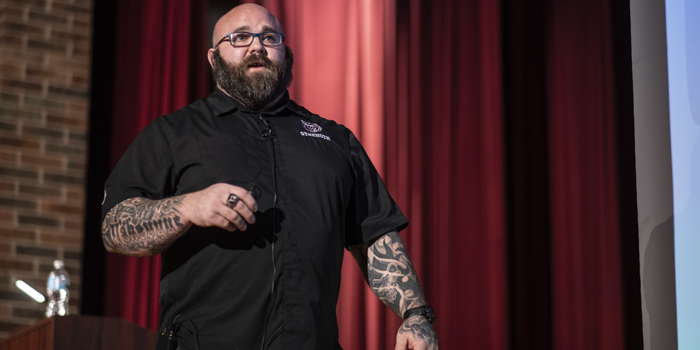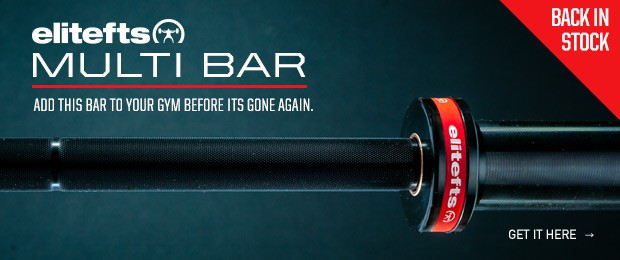
If you want to help your athletes learn the clean, front squatting can be a great way to do so — but not if you let the athletes hold the bar by crossing their arms and pointing their elbows forward. Whether you want to use the front squat in your training program as an exercise to help with the clean or as a strength-builder itself, there are some simple tips to help athletes perform the movement correctly. In this video from the 2018 elitefts Sports Performance Summit, Missouri State University Director of Strength and Conditioning Jeremy Frey walks through some key cues for the front squat and explains what to focus on with your athletes.
To begin, he covers several basics of the front squat:
- Bar held at the base of the throat
- Hands positioned just outside shoulder width
- Bar rests on the shoulders with the elbows parallel to the floor
- The core is set before initiating movement
- Weight on heels, hips drive back, elbows drive up
The athletes should have their hands on the bar and their elbows up at 90 degrees. Everyone's flexibility is different, and the position for each athlete will depend on their shoulder, elbow, and wrist mobility. No matter their position, however, they need to focus on driving their elbows to the ceiling. The only way the bar will stay on the shoulders is if they keep their elbows up as they squat down through the full range of motion. With that rule in mind, the typical squat cues apply: load the hips back, keep the weight on the heels, keep the knees out, and keep a neutral spine. If your athletes go into posterior pelvic tilt—the "butt wink" pattern—at a certain point in their descent, that is where they should start to come back up. You want the athletes to complete the best possible range of motion without messing up the motion. There are certain things to look for, such as:
- Does the athlete reach parallel or close to parallel?
- Does the athlete keep the weight on their heels?
- Are the athlete's hips behind them?
- Are the athlete's elbows up?
- Is the athlete's spine in a neutral position?
- Is the athlete's head in a neutral position?
- Does the athlete look up?
That final point—where the athlete looks—is especially important, because head action dictates hip action. If the head goes back, the hips drive forward. If the head stays neutral, the hips drive back. If the head drops, the chest drops. Lifters are often able to control these things and use them to their advantage, but athletes don't have the same control during movements. For this reason, the simplest rule to follow is to always keep the head neutral.









